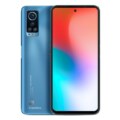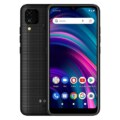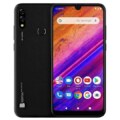- DroidAfrica
- Gadgets
- BLU
- BLU G51 Plus
BLU G51 Plus

BLU G51 Plus Highlights and Overview
BLU G51 Plus is the direct and upgraded version of the G50 plus of November last year. Four notable upgrade in this new model includes bigger display, slightly larger memory, refreshed design and updated OS. So you are getting a 6.5-inches display with 720 x 1600 pixels that has a dewdrop notch on the front.
On the back, the G51 Plus comes with a triple rear cameras of 13-megapixel main sensor and a dual 0.3-megapixel macro and depth sensors, along with a single LED flash. For selfie, there is a single 8-megapixel snapper within the teardrop notch.
On the inside, the phone features an octa-core UNISOC SC9863A CPU clocked at 1.6Ghz along with PowerVR GE8322 GPU. It has 64GB internal storage and 3GB of RAM, and can be further expanded using an SD card.
The device comes with hybrid SIM slot, and provide support for 4G VoLTE network. There’s Bluetooth 4.1, USB 2.0, a large 4000mAh battery and the latest Google Android 11 out of the box. The table below contains the full specs of BLU G51 Plus.
BLU G51 Plus Full Specifications and Features
NETWORK
| Technology | GSM / HSPA / LTE |
| 2G Network Bands | GSM 850 / 900 / 1800 / 1900 - SIM 1 & SIM 2 |
| 3G Network Bands | HSDPA 850 / 900 / 1700(AWS) / 1900 / 2100 |
| 4G Network Bands | LTE band 1, 2, 3, 4, 5, 7, 12, 17, 28 |
| Speed | HSPA 42.2/5.76 Mbps, LTE |
LAUNCH
| Also Known As |
- - |
BODY
| Dimensions | 165 x 76.5 x 9.3 mm |
| Weight | 200 grams |
| Build | Front glass, plastic body |
| SIM Type | Dual SIM (Nano-SIM, dual stand-by) |
DISPLAY
| Display Type | IPS LCD capacitive touchscreen, 16M colors |
| Size | 6.5 inches, 102.0 cm2 (~80.8% screen-to-body ratio) |
| Resolution | 720 x 1600 pixels, 20:9 ratio (~270 ppi density) |
PLATFORM
| Operating System | Android 11 |
| Chipset | Spreadtrum UniSoC SC9863A |
| CPU | Octa-core (4x1.6 GHz Cortex-A55 CPU and 4x1.2 GHz Cortex-A55) |
| GPU | PowerVR GE8322 |
MEMORY
| RAM + ROM | 3 GB |
| Card Slot | Yes, up to 128GB GB via microSD card (uses SIM 2 slot) |
MAIN CAMERA
| Camera Type | Triple Lenses |
| Camera Sensor(s) |
Main: 13 MP, (wide), 1/3.0", 1.12µm, PDAF Macro: 0.3 MP Depth: 0.3 MP |
| Camera Features |
Autofocus Continuous shooting Geotagging Panorama HDR Touch focus Face detection 5-element lens |
| Video Resolution | 1080p@30fps |
SELFIE CAMERA
| Camera Type | Single Lens |
| Camera Sensor(s) | 8-megapixel |
| Camera Features |
Face Beautification FaceID |
| Video Resolution | 720p |
SOUND
| Loudspeaker | Yes |
| Speaker Location | Placed at the base of the phone |
| Audio Jack Type | Yes, 3.5mm audio jack |
CONNECTIVITY
| Bluetooth | Bluetooth 4.1 |
| NFC | |
| GPS | A-GPS , GLONASS |
| FM Radio | Yes, FM Radio |
BATTERY
| Battery Capacity | Non-removable Li-Ion 4000mAh battery |
OTHER FEATURES
| Sensors | Fingerprint (side-mounted), accelerometer, proximity, compass |
| Box Contents | Charging Brick / USB cable |
BLU G51 Plus User Reviews and Opinions
Disclaimer Note
We CANNOT guarantee 100% accuracy for the specification table above.












